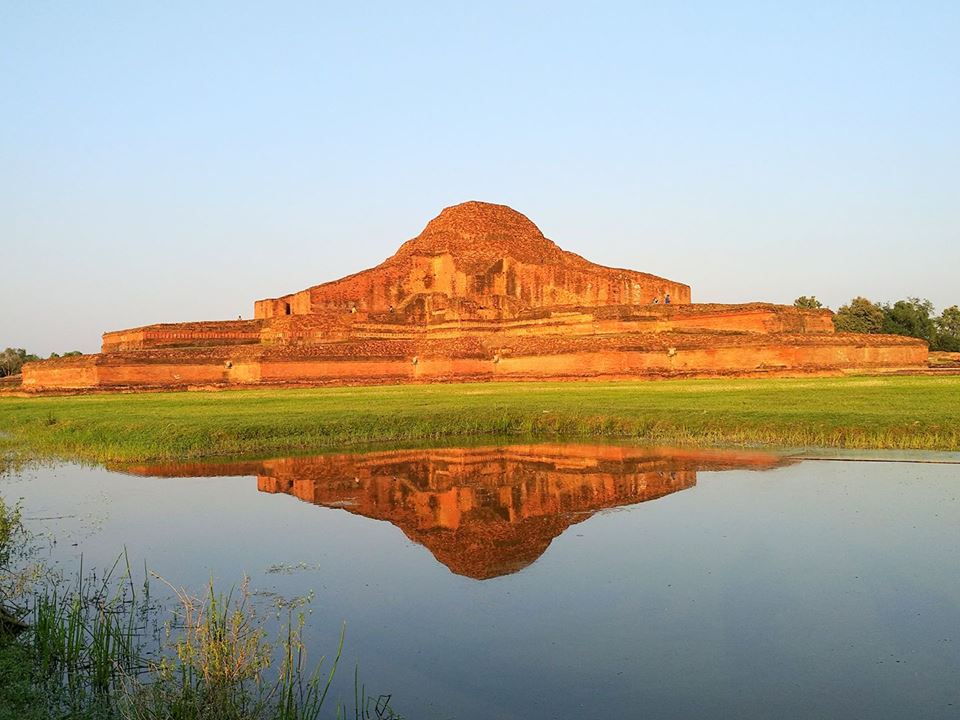
Paharpur.
Paharpur can be called the largest Buddhist monastery in the world. In size it can be compared to Nalanda Mahavihara in India. It has been a very famous Buddhist teaching center for 300 years. Buddhists not only from different parts of the subcontinent, but also from China, Tibet, Myanmar (then Burma), Malaysia, Indonesia etc. used to come here to acquire religious knowledge. Atish Dipankar Srigyan was the Acharya of Bihar in the 10th century AD.
It was declared a World Heritage Site by UNESCO in 1985.
Somapura Mahavihara was located between Pundranagar (now Mahasthan), the capital of Pundravardhana, and another city, Kotivarsha (present-day Bangarh). Its ruins belong to the greater Rajshahi of present day Bangladesh
It is located at Paharpur village in Badalgachhi upazila of Naogaon district. On the other hand, its distance from Jamalganj railway station in Joypurhat district is only 5 km to the west. Its geographical position is from 25 ´ 08 North to 25 ° 157 North latitude and from 8 ° 508 East to 89 ° 107 East longitude. The antiquities cover an area of about 0.10 sq km (10 ha) in the village. The land plan of this archeological specimen is quadrangular in shape. [1] It is located in the flood plain of North Bengal, Bangladesh, in the lowlands of the Pleistocene-era Barind. The soil is reddish due to the presence of iron in the soil. However, at present this soil is covered with sediment in most places. It survives as a hill-like structure located at a height of about 30.30 m above the surrounding plains. The locals used to call it Gopal Cheetah Hill; Since then it has been called Paharpur, although its real name is Sompur Bihar.
After the arrival of the British in the Indian subcontinent, they started conducting survey work everywhere. Buchanan Hamilton conducted the survey in East India; Who visited Paharpur sometime between 1608 and 1812 AD. This was the first archeological visit to Paharpur. Then came to visit this archeological site
Westmact. They returned to the country and published their experiences in newspapers. It is from this source that Alexander Cunningham visited this historic site in 179 AD. After the inspection, he expressed interest in excavating the land on a large scale. But the then zamindar of Balihar, the owner of the land, prevented him from doing so. So he escaped by excavating a small part of the Bihar area and a small part of the top of the central mound of antiquities. During this excavation, he discovered a square building with a protruding part around the central mound, which was 22 feet in length. [2] The site was finally declared a preserved antiquities in 1919 under the Archaeological Act of 1904.
How to get there: Dhaka to Naogaon bus. Naogaon to Bihar local transport (bus).